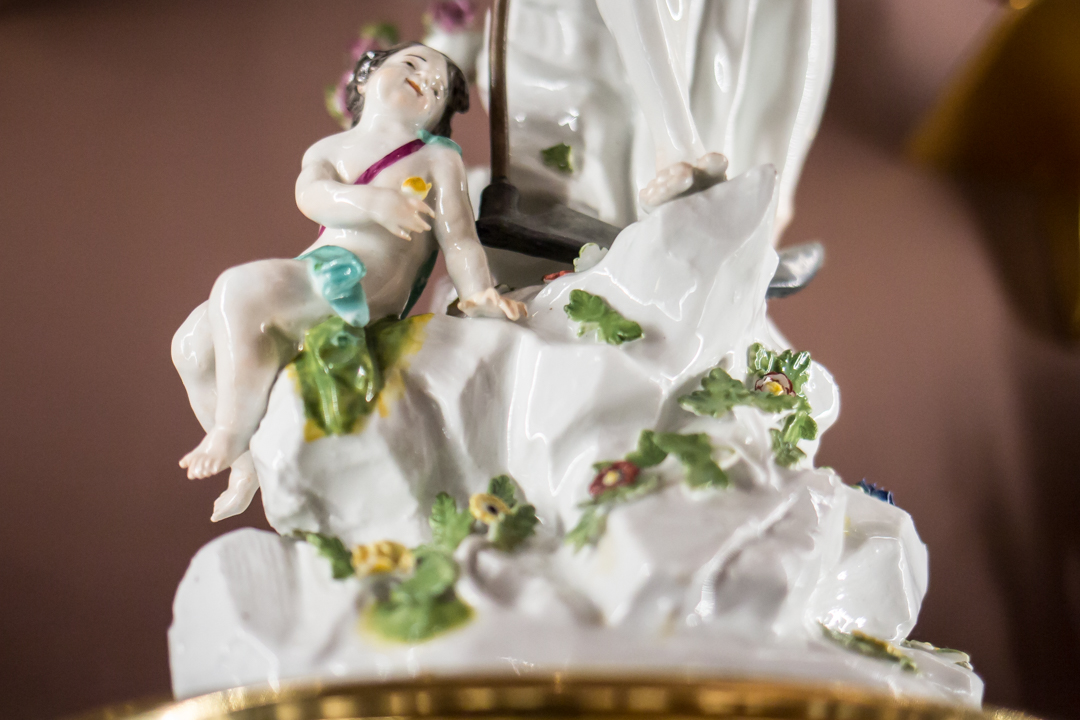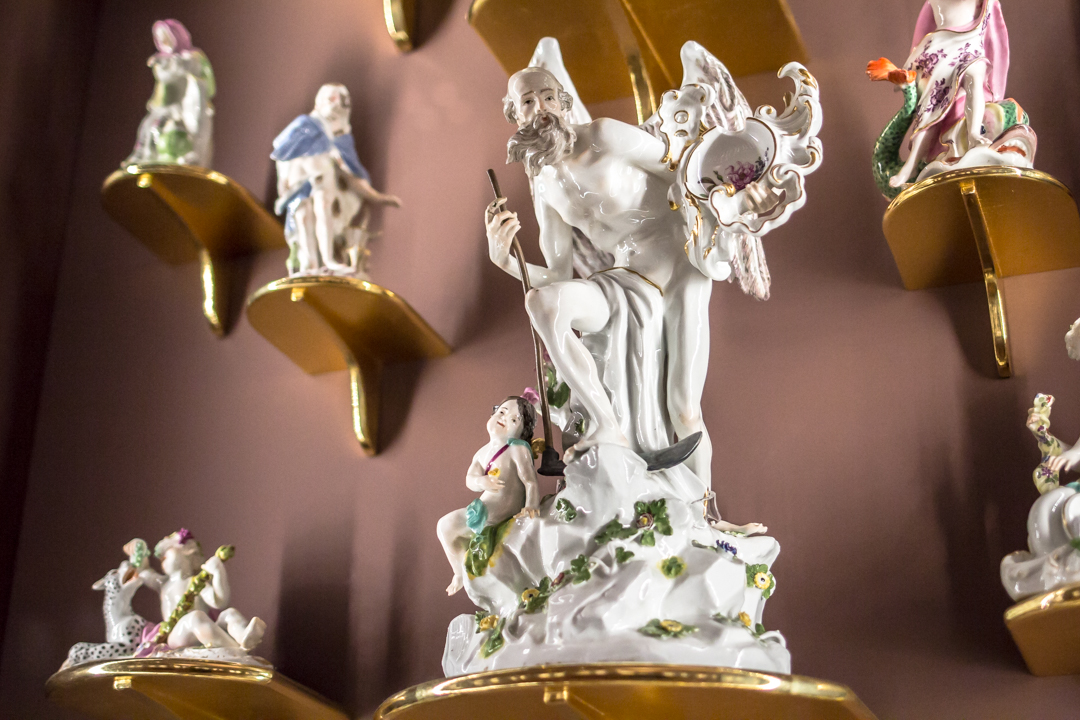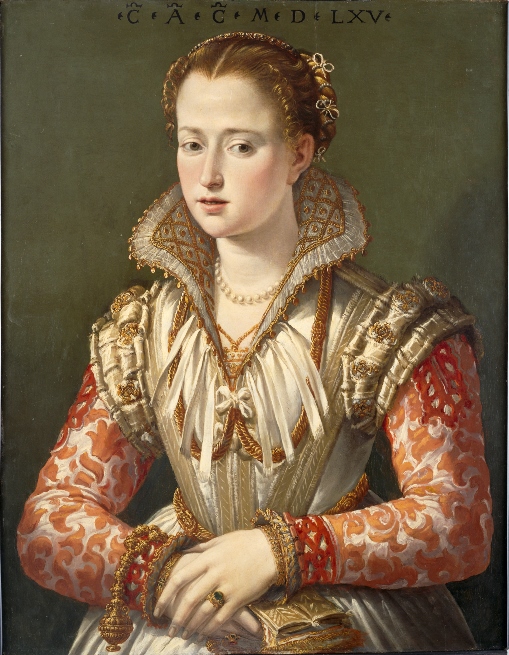Object of the Week: Father Time
Lurking deep in SAM’s dark halls, a scythe-wielding, wizened figure strides toward you—and he can’t wait to turn the clocks back on Sunday.
As an allegory meant to inspire ruminations on aging, Father Time figures as part of a larger story of allegory in the fine and decorative arts of the 18th century. In paintings and sculpture, as in porcelain, personifications of the four seasons, four elements, four (known) continents, five senses, and twelve months acted out their meaning by looking the part and carrying symbolic items. Artists tapped into established systems of iconography—such as Cesare Ripa’s Iconologia (1603), which established fundamental characteristics for allegories of the four continents—to create these groupings. For collectors and connoisseurs, the challenge of spotting every symbolic reference in the appearance and accoutrements of the figure provided an opportunity to show off one’s learning.

Here, the German porcelain figure of Father Time combines a couple of symbolic and mythological traditions in an allegorical mishmash that honors an 18th-century tradition of incorporation. His bald dome, resplendent in hard paste porcelain, marks his advanced age. Wisps of hair cascading over his ears and the long locks of a flowing beard complete his look. He’s not a harvester of death, as his threatening scythe might suggest. The scythe symbol developed from a lack of verbal distinction between the Greek god of agriculture, named Cronus, and their word for time, chronos. Father Time’s wings were a contribution by Renaissance artists to an already confused allegory. A youthful boy lounges at his feet, grasping a yellow flower. The boy’s presence, and the flower, mimicking humanity’s life cycle at an accelerated tempo, reminded viewers that age, and his companion death, would come for all.
Appropriately meta, Father Time presents a watch holder in his left hand. Originally the porcelain figure would have served to store and display a pocket watch, and in the symbolic program of the artwork, the pocket watch fills the place of the hourglass that one would expect to find in representations of Father Time.

As it allegorizes and visualizes time, SAM’s porcelain figure enters into a long tradition that includes masterpieces dating back to the Renaissance, like Bronzino’s An Allegory of Venus and Cupid. That it aims to incorporate an actual time-keeping element places it more in the line of contemporary thinking. One of the notable, innovative works to do this recently is Christian Marclay’s video installation The Clock (a portion of which can be viewed here). In the same vein, Maarten Baas’s Analog Digital Clock comprises a video work in which the artist manually creates a representation of a digital clock, continually painting, obscuring, and then re-painting the clock’s minute digits as they pass.
However you’re keeping time this weekend, I say forget counting minutes and make your minutes count.
–Jeffrey Carlson, SAM Collections Coordinator

